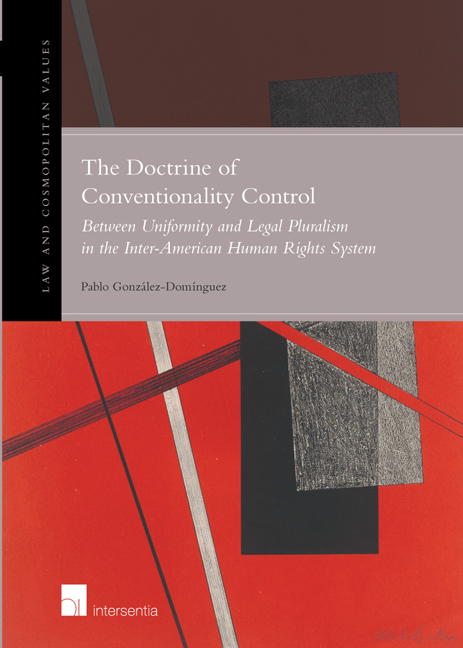 The Doctrine of Conventionality Control
The Doctrine of Conventionality Control Published online by Cambridge University Press: 11 October 2018
OVERVIEW
Over the last two decades, there has been a tendency in the States parties to the American Convention on Human Rights, and in the institutions of the Inter- American System of Human Rights, to create rules and principles that allow domestic authorities – especially judges – to increase the effectiveness of the American Convention and other sources of international law at the domestic level. Several States have “opened the door” of their domestic legal systems, through constitutional amendments, or by decisions of their highest courts, to allow an ample incorporation of the human rights standards of the Inter- American System. The Inter-American Court of Human Rights has followed a similar tendency, ordering States to amend laws and to change practices that have been identified as structural causes of human rights violations. The States parties to the American Convention, as well as the Inter-American Court, apparently start from what could be called a truism for our times: that the effectiveness of the rights and freedoms recognized in international human rights law must lie primarily in the action of domestic institutions, not of international institutions.
The doctrine of conventionality control is one of the Inter-American Court’ s most recent efforts to increase the influence and effectiveness of the different sources of law in the Inter-American System at the domestic level. Although it is still an idea in progress, conventionality control can be defined as an international legal obligation that requires all the authorities of the States parties to the American Convention to interpret domestic law in accordance with the Inter-American Corpus Juris, which is integrated by the American Convention, treaties of similar nature (i.e. the Inter-American Convention to Prevent and Punish Torture), the interpretations of these treaties made by the Inter-American Court (in the exercise of its contentious or advisory jurisdiction) and other sources of soft law in the Inter-American System (i.e. the Inter-American Democratic Charter). In accordance with this doctrine, State authorities must avoid the enforcement of anti-conventional laws in case that no consistent interpretation is legally possible, although they must always act within their competences and the corresponding procedural regulations as defined by domestic law.
To save this book to your Kindle, first ensure [email protected] is added to your Approved Personal Document E-mail List under your Personal Document Settings on the Manage Your Content and Devices page of your Amazon account. Then enter the ‘name’ part of your Kindle email address below. Find out more about saving to your Kindle.
Note you can select to save to either the @free.kindle.com or @kindle.com variations. ‘@free.kindle.com’ emails are free but can only be saved to your device when it is connected to wi-fi. ‘@kindle.com’ emails can be delivered even when you are not connected to wi-fi, but note that service fees apply.
Find out more about the Kindle Personal Document Service.
To save content items to your account, please confirm that you agree to abide by our usage policies. If this is the first time you use this feature, you will be asked to authorise Cambridge Core to connect with your account. Find out more about saving content to Dropbox.
To save content items to your account, please confirm that you agree to abide by our usage policies. If this is the first time you use this feature, you will be asked to authorise Cambridge Core to connect with your account. Find out more about saving content to Google Drive.